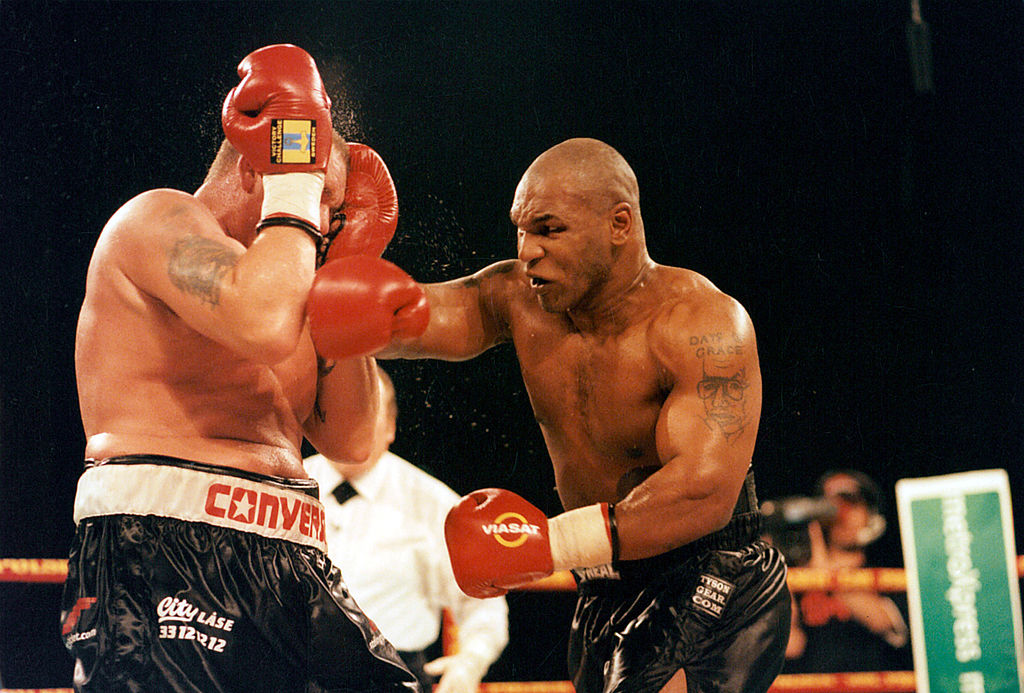When one thinks of legendary boxers, the name Mike Tyson inevitably comes to mind, primarily due to his explosive fighting style and, most notably, his devastating punch power. Tyson's ability to deliver bone-crushing blows has left an indelible mark in the world of boxing, making him a formidable opponent in the ring. With a blend of speed, ferocity, and technique, Tyson's punches have not only earned him titles but have also redefined the standards for what it means to hit hard. This article delves into the intricacies of the Tyson punch power, examining how it became a defining feature of his career and the science behind it.
Throughout his career, Tyson's punch power has been the subject of extensive analysis and admiration. He has been known to finish fights in the first round, leaving opponents dazed and confused, often before they could even find their footing. Many boxing analysts and fans alike have speculated about the factors contributing to this phenomenal punching power. Was it sheer strength, impeccable technique, or a combination of both? As we unravel the enigma of Tyson's power, we will explore various dimensions, including his training regimens, physical attributes, and psychological factors that play a role in his explosive punches.
In the realm of boxing, Tyson's punch power remains a benchmark against which many fighters are measured. His ability to knock out opponents with a single punch not only showcased his prowess but also instilled fear in the hearts of his rivals. Tyson's punches have become a symbol of what it means to be a knockout artist. In this exploration, we will take a closer look at Tyson's biography, analyze the mechanics of his punches, and investigate the legacy of Tyson's punch power within the sport of boxing.
What Made Mike Tyson's Punch Power Legendary?
Mike Tyson's punch power is often attributed to various factors that combined to create an almost mythical force in the ring. Let's break down the key elements that contributed to his legendary status:
- Physical Attributes: Tyson's compact build (5'10" with a 71-inch reach) allowed him to generate tremendous leverage in his punches.
- Training Regimen: Under the mentorship of Cus D'Amato, Tyson underwent rigorous training that emphasized footwork, head movement, and punching technique.
- Speed and Agility: Tyson's quick hands and fast footwork enabled him to deliver punches before opponents could react.
- Psychological Edge: His fearsome reputation often intimidated opponents, causing them to hesitate in the ring.
Biography of Mike Tyson
| Detail | Information |
|---|---|
| Name | Michael Gerard Tyson |
| Date of Birth | June 30, 1966 |
| Place of Birth | Brooklyn, New York, USA |
| Height | 5 ft 10 in (178 cm) |
| Boxing Style | Orthodox |
| Professional Debut | 1985 |
| Titles Held | WBC, WBA, IBF heavyweight champion |
| Notable Achievements | Youngest heavyweight champion in history |
How Did Tyson Train to Achieve Such Punch Power?
Training played a pivotal role in shaping Tyson's punch power. He followed a rigorous and disciplined routine, which included:
- Heavy bag workouts to develop power and technique.
- Speed bag training to improve hand speed and coordination.
- Shadow boxing to enhance footwork and movement.
- Strength training to build muscle and explosiveness.
What Role Did Technique Play in Tyson's Punches?
Technique is crucial in boxing, and Tyson's punching technique was exceptional. Key aspects of his technique included:
- Utilizing his legs to generate power.
- Maintaining a tight guard while delivering punches.
- Executing quick combinations that overwhelmed opponents.
Can Tyson's Punch Power Be Quantified?
Many boxing analysts have attempted to quantify Tyson's punch power through various methods, including:
- Using punching power measurement devices.
- Analyzing fight statistics, such as knockout ratios and punch accuracy.
- Comparing Tyson's punch power to other heavyweight champions.
What Legacy Does Tyson's Punch Power Leave in Boxing?
Tyson's punch power has left a lasting legacy in the world of boxing. His ability to deliver knockout blows has set a standard for future fighters. Some key elements of this legacy include:
- Inspiring a new generation of heavyweights to develop their punching power.
- Changing the perception of smaller heavyweights being able to compete with larger opponents.
- Establishing a fear factor in the minds of opponents.
How Does Tyson Compare to Today's Heavyweights?
When comparing Tyson's punch power to that of today's heavyweights, several factors come into play:
- Modern training techniques and sports science.
- Differences in fighting styles across eras.
- Physical conditioning and nutrition advancements.
Conclusion: The Enduring Impact of Tyson Punch Power
The Tyson punch power is more than just a measure of strength; it embodies the spirit of boxing itself. Tyson's ability to knock out opponents with a single blow has solidified his status as one of the greatest heavyweights in history. As we reflect on his career, it’s evident that his punch power has not only defined his legacy but also influenced the sport of boxing for generations. Whether you are a boxing enthusiast or a casual fan, Tyson's punch power remains an unforgettable aspect of the sport's history and a benchmark for future fighters to aspire to.




